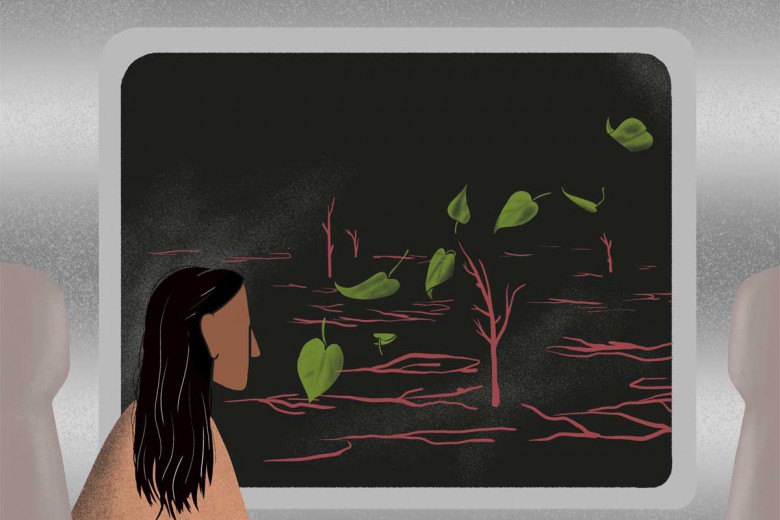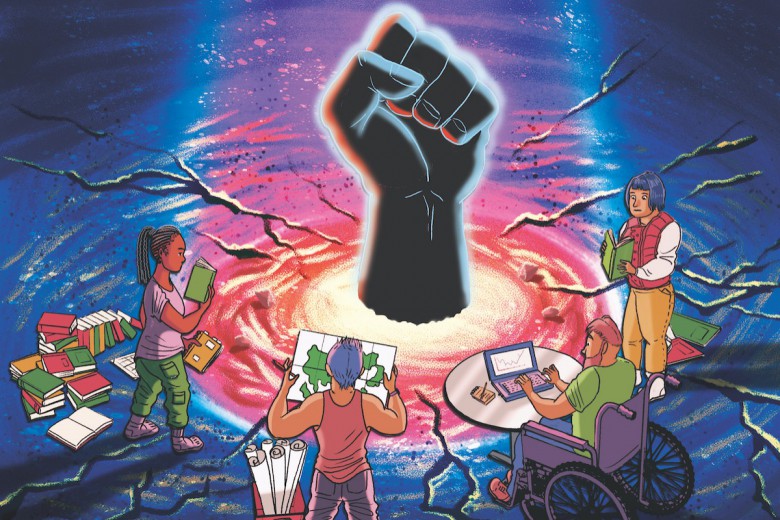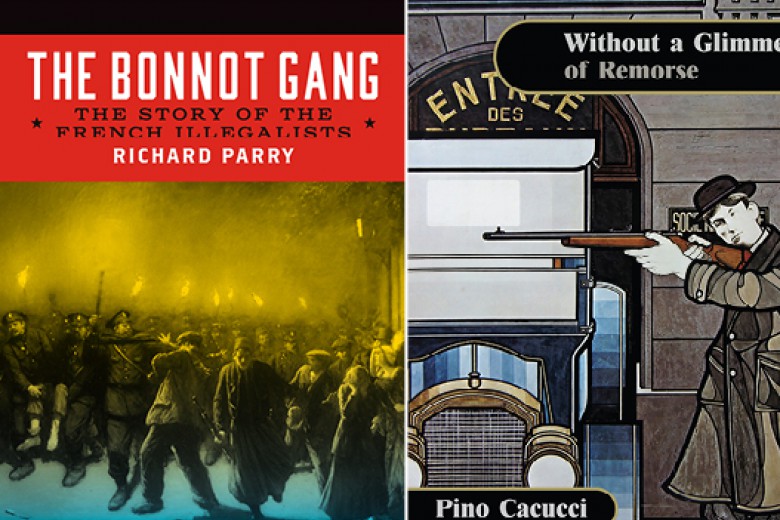I first came across the language of just transition in the mid-’90s, while in the middle of an organizing drive to unionize B.C. tree planters. We were facing the removal of labour and environmental protections due to the North American Free Trade Agreement (NAFTA), and growing conflicts between forest corporations and First Nations defending their traditional lands. To broaden our base of allies, we, the Canadian Reforestation and Environmental Workers Society (CREWS), had joined the Labour Environmental Alliance Society (LEAS). LEAS was a space where trade unionists, environmental groups, and First Nations leaders worked together on common environmental solutions, at a time when corporations were pitting us against one another by claiming that protecting the environment would result in job loss.
Mae Burrows, the founder of LEAS (now known as Toxic Free Canada), had returned from a conference in California armed with literature from the Just Transition Alliance (JTA). JTA was a coalition of labour unions and environmental justice groups that had come together to organize around a common set of values, principles, goals, and demands for change. They aimed to align front-line workers and fenceline communities being harmed by the same toxic, petrochemical industries. While the “environmental justice” movement had not yet spread widely across Canada, its core premise – that Indigenous communities, communities of colour, and poor people are disproportionately impacted by environmental harm – had already been articulated by grassroots activists here.
What we found most compelling about the Just Transition Alliance’s strategy was the assertion that communities and workers most impacted needed to be at the table to provide leadership in identifying the best solutions. Such “self-determination” could ensure their families were protected from more harm, and that the cost of any solutions would be borne by those causing the harm.
This strategy resonated with our vision of ending monoculture tree plantations, banning pesticide use and clear cutting of ancient forests, and pivoting toward community-led eco-forestry under the governance of sovereign First Nations. In collaboration with many grassroots groups, we were showing that more long-term, community-based livelihoods could be supported by such a path, than in the corporate, export-based, global forest economy we were fighting. Because of the crash of the Canadian forest industry in the following decade, much of this transformative vision remains an unfulfilled promise today. But as we continue to search for ways to mitigate carbon emissions and build climate resilience, restoring natural forest ecosystems through community-led eco-forestry practices remains one of the most promising strategies yet to be deployed.
“A few dozen community organizers spent hundreds of days, evenings, and weekends co-creating a vision of a future we were willing to fight for, and the just transition strategies and pathways to get there.”
The urgent need for such grassroots strategies was raised again in 2009, when a small group of us got on a call to discuss the creation of a Turtle Island (occupied Indigenous nations of U.S. and Canada) coalition to advance a “climate justice” agenda. Our discussion was prompted by the realization that front-line communities were not being represented at national and international climate policy tables, and that most big green groups at these tables were pandering to a corporate climate agenda – promoting bogus, profiteering schemes such as pollution trading, nuclear power, and biofuels.
This discussion led to a four-year process of building alignment across Indigenous, Black, Latinx, Asian Pacific Islander, and poor white communities under the banner of the Climate Justice Alliance (CJA), which was launched in 2013. Despite a severe lack of funding (even today, many funders remain reluctant to support grassroots climate strategies led by people of colour), a few dozen community organizers spent hundreds of days, evenings, and weekends co-creating a vision of a future we were willing to fight for, and the just transition strategies and pathways to get there.
Then, in 2014, CJA supported its environmental justice groups in organizing the People’s Climate March in New York City, which marked two major shifts in the politics of climate advocacy, and its accommodation of a just transition framework. First, it forced most national, white-led U.S. environmental groups to centre the leadership of communities most impacted by the climate crises – as we say, “at the frontlines of the crisis, at the forefront of change.” Second, a growing number of national and local unions began engaging front-line community groups to build a shared understanding of deep, systemic change – a change that couples “decarbonization strategies” with goals of the detoxification, demilitarization, degentrification, and democratization of the economy.
There are still many challenges that our grassroots movements face. Philanthropy still funnels hundreds of millions of dollars more to white-led environmental groups, instead of movements led by Indigenous people and people of colour. Big green groups still pander to neoliberal policy proposals and bogus technology promises of trans-national corporations – including unproven schemes such as cap-and-trade, and carbon capture and storage.
But with every pipeline that our grassroots movements are able to halt, and every waste incinerator and dirty power plant we are able to shutter, our commitment to finding healthier, more sustainable alternatives that allow us all to make a living on a living planet, grows stronger and more promising.







